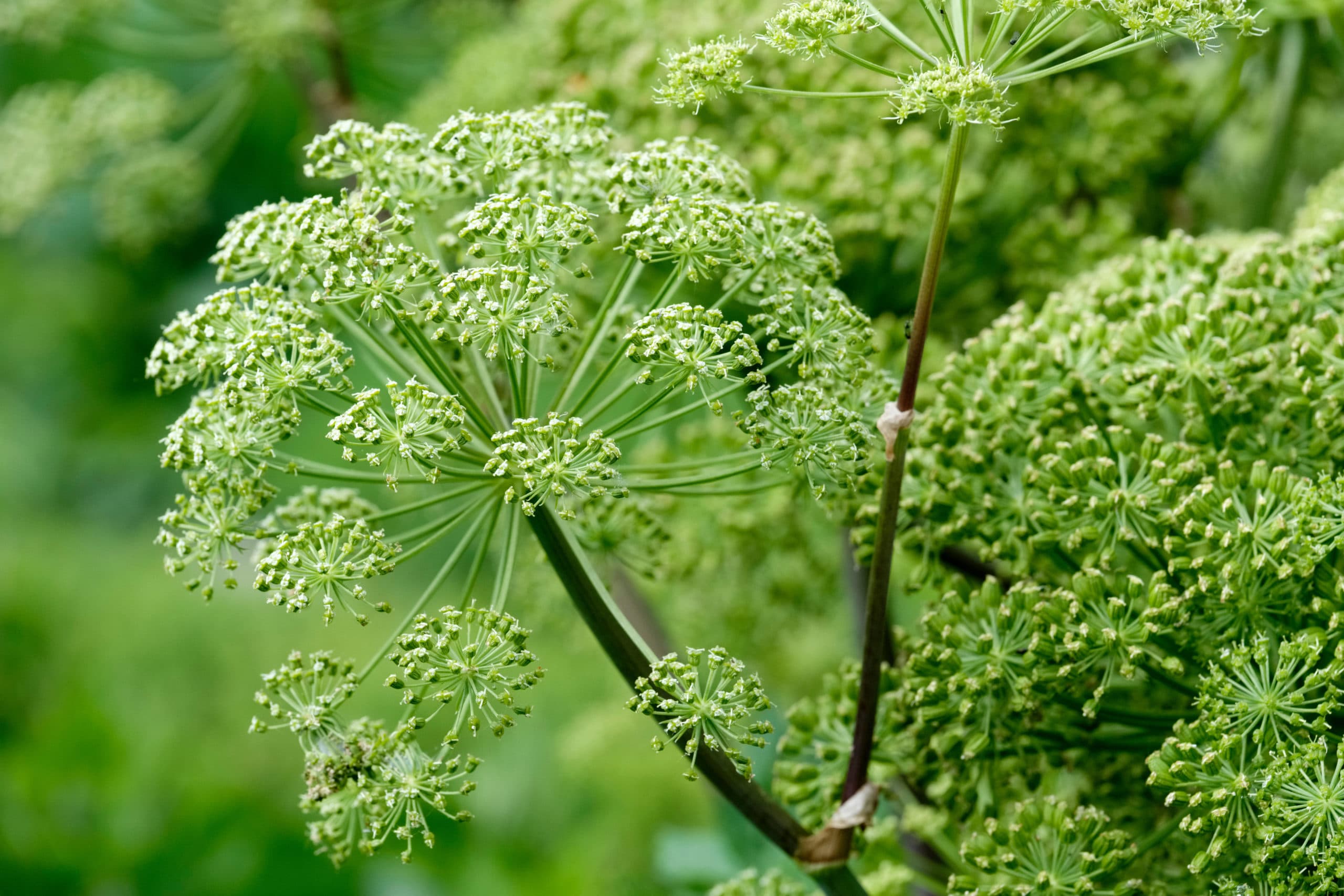
Scientific Name
Angelica archangelica
Common Names
Angelica, Garden Angelica, Wild Celery
Plant Family
Apiaceae
Location
Native to Europe and Asia. Grows best in cool, moist climates and can be found near streams, meadows, and woodland edges. Thrives in partial shade and rich soil. I've grown it easily in cooler climates — doesn’t like too much heat.
Description
A big, showy biennial with umbrella-shaped flower clusters in its second year. Tall, hollow stems (often purplish), and large, divided leaves that have a distinctly musky, earthy scent — somewhere between sweet celery and resin. Whole plant is aromatic. You can feel its presence in the garden.
Uses
A versatile herbal remedy valued for its ability to soothe digestive disturbances as a carminative and digestive bitter, helping with bloating, flatulence, indigestion, and poor appetite. Its herbal actions also include anti-inflammatory and analgesic properties, which make it useful in easing joint pain, muscle aches, and neuralgic discomfort. The herb shows antimicrobial and antifungal activity, especially in its essential oil from roots, capable of inhibiting pathogens such as Candida albicans, Aspergillus niger, and various bacteria. It is also a mild antispasmodic, useful for uterine and intestinal cramps, and as a warming nervine, it calms anxiety, fatigue, and soothes respiratory distress such as coughs and bronchial congestion. Furthermore, it has expectorant, diaphoretic (promoting sweating), and circulatory stimulant effects, helping with fevers, chills, and poor peripheral circulation.
Energetics
Aromatic, warming, slightly bitter, slightly drying. Moves things. Good when things feel cold, stuck, or emotionally sluggish.
Parts Used
Root (most common), seed, stem, leaf. Seeds are especially aromatic and nice in bitters formulas. The root is deepest and most grounding medicinally.
Constituents
Volatile oils (pinene, limonene), coumarins (bergapten — watch for photosensitivity), flavonoids, bitter compounds. The smell alone tells you it’s medicinal.
Dosage
- Root tincture: Start with 5–10 drops and go from there. I rarely go over 30 drops unless I’ve worked with someone and know how they respond.
- Seed tincture or aromatic bitters: 5–15 drops before meals — beautifully warming.
- Decoction: About 1 tsp root per cup, simmered 15 min. Also works well infused in honey or vinegar for digestion.
Notes on Use
The root has a long reputation in European medicine for protection, vitality, and gut strength. Use it for people who are “cold and stuck” emotionally or physically — grief in the gut, poor circulation, boggy digestion, etc. The root feels more grounding and serious — almost like a bear hug — while the seeds and leaves are a bit more uplifting and lighter.
Harvesting
• Root: Late fall in the first year or early spring of second year before flowering.
• Seed: After it turns brown and aromatic.
• Leaves: Can be used fresh in season, though more common for culinary use.
Contraindications
Not for use in pregnancy (stimulates uterus). Watch out for photosensitivity due to furanocoumarins — avoid sun after use, especially in high doses. Can be overstimulating in hot, dry constitutions.
Recipes
- Digestive Bitters: Angelica seed, orange peel, ginger, gentian root — a few drops before meals.
- Warming tea: Angelica root, elecampane, cinnamon — helpful for lung dampness and digestive cold.
- Emotional protection tincture: Angelica root + rose + hawthorn — for those who hold grief in the belly or feel energetically “porous.”